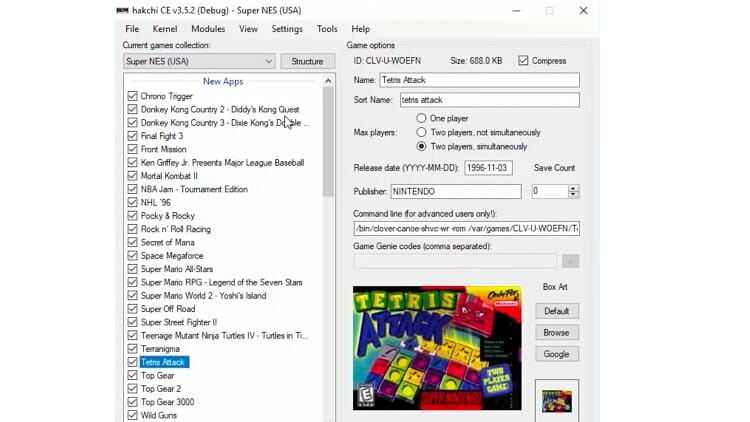The NES Classic Mini was one of the earlier releases in what became a wider trend for tiny versions of classic retro consoles to be released. Everybody wanted one but numbers were limited, so only the lucky few gained this chance to relive their childhood through the medium of Donkey Kong or Mario Brothers on real Nintendo hardware. Evidently [Albert Gonzalez] was one of them, because he’s produced a USB adapter for the Mini controller to allow it to be used as a PC peripheral.
On the small protoboard is the Nintendo connector at one end, an ATtiny85 microcontroller, and a micro-USB connector at the other. The I2C interface from the controller is mapped to USB on the ATtiny through the magic of the V-USB library, appearing to the latter as a generic gamepad. It’s thought that the same interface is likely to also work with the later SNES Classic Mini controller. For the curious all the code and other resources can be found in a GitHub repository, so should you have been lucky enough to lay your hands on a NES Classic Mini then you too can join the PC fun.
The mini consoles were popular, but didn’t excite our community as much as could be expected. Our colleague Lewin Day tool a look at the phenomenon last summer.
Developer Sera Tonin Brocious, @daeken on Twitter, took to Twitter to share the joy of making the Yuzu Nintendo Switch emulator run on an M1 Mac running Super Mario Odyssey. Nintendo’s nostalgia-fueled Super NES Classic has been out for less than two weeks. The graphical hyperlinked Mac app that influenced the. Tricks and Hacks for Doing Everything Better.
After guesses, estimations, and positive early tests, the Super NES Classic has emerged as a hackable little piece of gaming nostalgia—and quite an easy one to hack, at that. This weekend saw the September device receive a simple exploit in the form of hakchi2, a Windows program designed by a Russian hacker who calls himself 'ClusterM,' and, among other things, it allows fans to add far more games to the system than its default set of 21.
If any of that sounds familiar, as opposed to gibberish, it's because the same program and hacker emerged shortly after the launch of 2016's Linux-powered NES Classic. ClusterM found a way to wrap that system's FEL-mode exploit (read lots more about that here) in a tidy Windows GUI, which allowed fans to use Windows Explorer menus to dump game ROMs, emulator cores, and even new art into their boxy ode to '80s Nintendo bliss.
ClusterM announced plans to repeat his trick well before the SNES Classic landed in stores, and his hacking hopes looked promising with the reveal, courtesy of Eurogamer, that the SNES Classic has a near-identical chipset and board compared to the NES Classic. Initial tests of the FEL-mode exploit, which requires booting into a telnet interface to talk to Nintendo's Linux box, proved promising, and ClusterM returned eight days after the system's launch with a new hakchi2 version—which now works with either 'Nintendo classic' system.
To use ClusterM's updated program, plug a SNES Classic into a Windows computer by using a standard Micro USB cable, then run the hakchi2 program while following all on-screen instructions, which include a few taps of buttons on your SNES Classic. This will back up your system's original state and then let you add new ROMs and other tweaks while showing how much on-board memory remains free on your system.
AdvertisementNot every game works, but...
Hack Nintendo Switch Games

The beauty of the NES Classic's hack is that its default NES emulator works with pretty much every NES game thrown at it. The same cannot be said for the SNES Classic, as the Nintendo-developed emulator—which appears to be superior to the one on the Wii U, at least—chokes on a few more games. In some cases, that's due to a lack of support for certain custom chip implementations, while others just glitch out in funky ways. (A full, fan-created guide to games that have issues running via the SNES Classic's default emulator can be found here.)
Nintendo Classic Hack Machines
But even the NES Classic didn't have a 100-percent success rate with added, unofficial ROMs, and, in very good news, the SNES Classic supports that system's same backup path: installed RetroArch emulation cores. Fans have already confirmed that these support more SNES games, along with a variety of other classic consoles. Basically, if an emulation scheme worked on the NES Classic, it will also work on this one. (ClusterM provides a pretty easy way to load RetroArch on the SNES Classic, as well.)
Nintendo Classic Hack Mac

Hack Nintendo Switch Lite
More enterprising hakchi2 users can also add two interesting new tweaks to the SNES Classic, though these require some telnet operations. First, users can now add custom 'background' images, which fill out the rest of the 16:9 screen not filled up by the original games' much smaller resolutions. (The SNES Classic only ships with a few of these, and some new ones made by the community, including two collections shared at NeoGAF, already look better than Nintendo's offerings.) Even better, the SNES Classic had a tweaked 'scanline' filter hidden inside of it, which can now be enabled with some command-line editing. Based on my experience, I would say this tricky update, which adds horizontal scanlines when the filter is turned on, is worth the effort. (Head here and here for guides on both.)